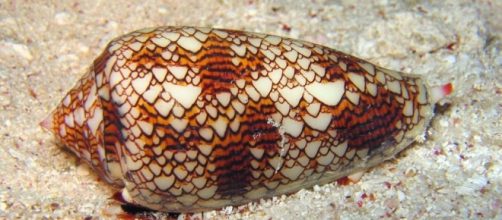A little sea snail, known by the Latin name of Conus Regius, could be the source of a painkiller as powerful as opioids, but without the notorious side effects of the latter. The new painkiller, which acts on acetylcholine receptors, was discovered and tested by researchers at the University of Utah who published the results of their work in the scientific journal "PNAS."
Opioid, pain management, and substance abuse
The nervous system has very effective mechanisms to mitigate pain perception. They are located in different areas of the brain and spinal cord and are based on the activity of neurotransmitters such as endorphins.
However, in some cases these endogenous analgesics are not enough and the administration of painkillers such as opioids, which include morphine and codeine and act on endorphins receptors, is required. For example, medical doctors employ opioids in case of acute pain that follows surgery or cancer pain.
Although they are very effective, opioids used for therapeutic purposes along with numerous unwanted side effects such as nausea, respiratory failure, and mood swings, interfere with the psychological reward processes and can be addictive. Not only that, but several studies also suggest that there is a real opioid epidemic of addiction happening as a result of use.
A new painkiller without the side effects of opioids
For the reasons just mentioned, pharmacological research has been working for years to find dependable substitutes to opioids to treat cancer pain or post-operatively, and even chronic pain, without the risk of falling back into the related side effects of opioids.
"Nature provides us with some very sophisticated substances that can have unexpected effects on humans," says Baldomero Olivera, a biology professor at the University of Utah and leading author of the study.
"In our laboratory, for example, we focus on some poisons that act on the nervous system."
In this paper, Baldomero Olivera's team studied a substance contained in the venom of a mollusk abundant in the Caribbean Sea known as Conus Regius, used to paralyze and kill its prey.
The substance isolated from the venom is called RG1A and the neuroscientists found that in rats with neuropathic pain caused by chemotherapy, it acts on the neural circuits involved in pain perception.
Specifically, the substance blocks nicotinic acetylcholine receptors α9α10.
The RG1A blocks the pain signals without interfering with circuits controlled by opioids. Notably, its analgesic effects exceed the duration of permanence in the body, acting for 72 hours against pain. These results suggest that the new substance can enhance the activity of pain-relieving systems already present in the nervous system and, for this reason, it can even prevent pain.
Neuroscientists at the University of Utah are now aiming to assess the safety and efficacy profile of the compound in dealing with cases of pain that do not respond to any kind of therapy in humans.

